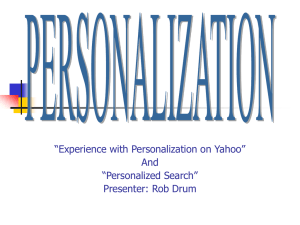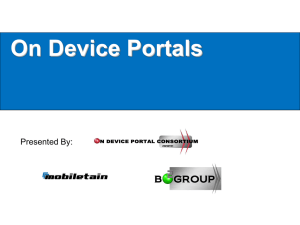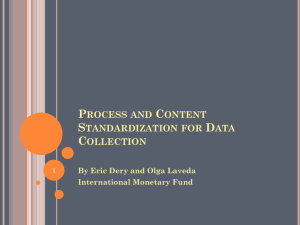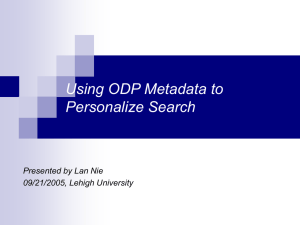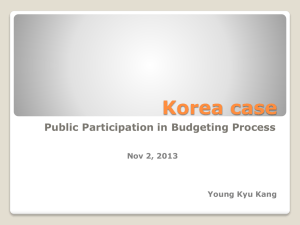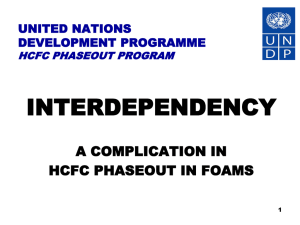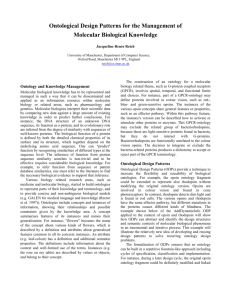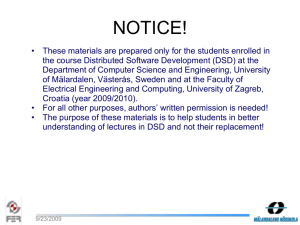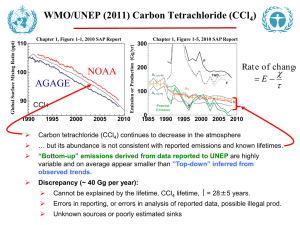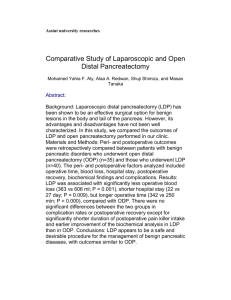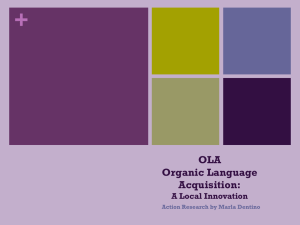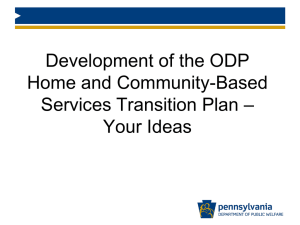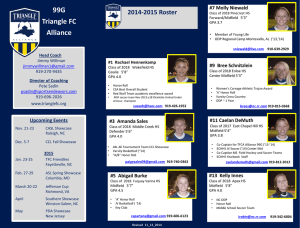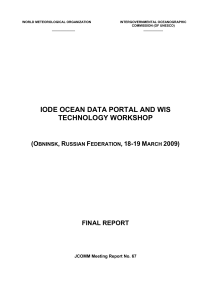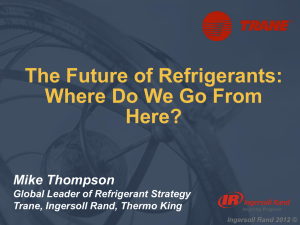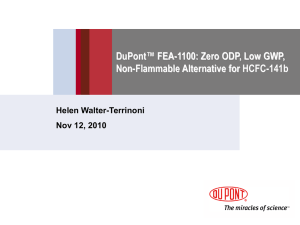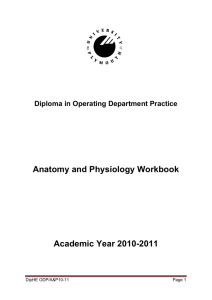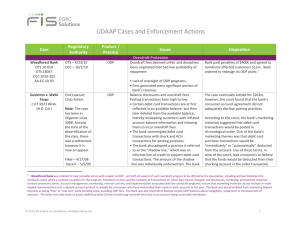Mobile Web Search Personalization
advertisement
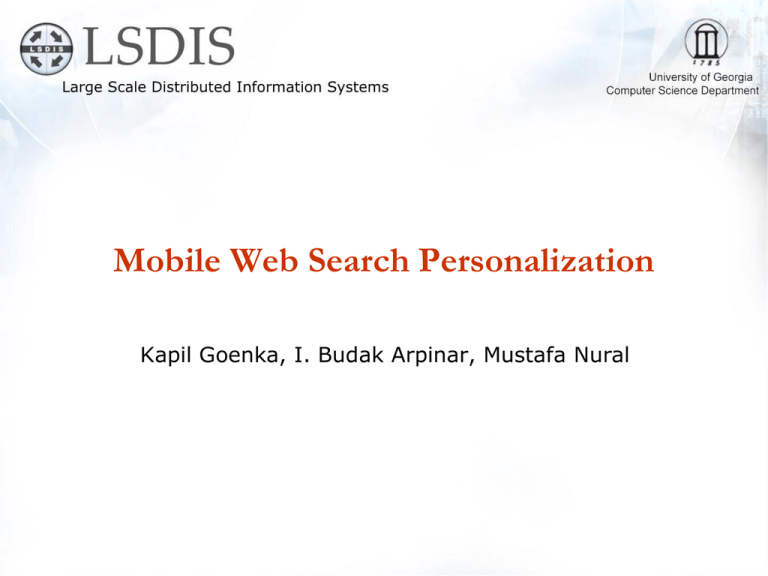
Mobile Web Search Personalization
Kapil Goenka, I. Budak Arpinar, Mustafa Nural
Motivation for Personalizing Web Search
• Personalization
• Current Web Search Engines:
– Lack user adaption
– Retrieve results based on web popularity rather than user's interests
– Users typically view only the first few pages of search results
– Problem: Relevant results beyond first few pages have a much lower
chance of being visited
2
Motivation for Personalizing Web Search
(cont’d)
• Personalization approaches aim to:
– tailor search results to individuals based on knowledge of their
interests
– identify relevant documents and put them on top of the result list
– filter irrelevant search results
3
Motivation for Personalizing Web Search
(cont’d)
• Mobile Clients
• In the mobile environment:
– Smaller space for displaying search results
– Input modes inherently limited
– User likely to view fewer search results
– Relevance is crucial
4
Goal
• Personalize web search in the mobile environment
– case study: Apple’s iPhone
• Identify user’s interests based on the web pages
visited
• Build a profile of user interests on the client mobile
device
• Re-rank search results from a standard web search
engine
• Require minimal user feedback
5
User Profiles
• store approximations of interests of a given user
• defined explicitly by user, or created implicitly
based on user activity
• used by personalization engines to provide
tailored content
Personalization
Engine
User Profile
Content
•
•
•
•
•
News
Shopping
Movies
Music
Web
Search
Personalized
Content
6
Approaches
Part of retrieval process:
Personalization built into the
search engine
Result Re-ranking:
User Profile used to re-rank
search results returned from a
standard, non-personalized
search engines
Query Modification:
User profile affects the
submitted representation
of the information need
7
System Architecture
8
Open Directory Project(ODP)
•Popular web directory
•Repository of web pages
•Hierarchically structured
•Each node defines a concept
9
Open Directory Project(ODP)
•Higher levels represent broader concepts
•Web pages annotated and categorized
•Content available for programmatic access
-RDF format, SQL dump
10
Open Directory Project(ODP)
• Replicate ODP structure & content on local
hard disk
– Folders represent categories
– Every folder has one textual document
containing titles & descriptions of web pages
cataloged under it in ODP
• Not all categories are useful
– World & Regional branches of ODP pruned
11
Open Directory Project(ODP)
12
Text Classification
• Task of automatically sorting documents
into pre-defined categories
• Widely used in personalization systems
13
Text Classification
• Carried out in two phases:
– Training
• the system is trained on a set of pre-labeled
documents
• the system learns features that represents each of the
categories
– Classification
• system receives a new document and assigns it to a
particular category
14
Text Classification
Flat Classifier
Hierarchical Classifier
•No relationship between categories
•Parent-child relationship between categories
•Widely used in classification
•Used with hierarchical knowledge bases
•Good accuracy
•Improvement in accuracy
•Single classification produces results
•One classifier for every node in hierarchy. Document
must go through multiple classifications before being
assigned to a category
•~500 ms for classifying top 100 Yahoo! Search results •~2 sec for classifying top 100 Yahoo! search results
Text Classification
• 480 categories selected from top three levels of ODP
• No automated way of selecting categories, use best
intuition
• Categories represent broad range of user interests
16
Yahoo Web Search API
• Provides programmatic access to the Yahoo! search index
• For each search result, returns {URL, title, abstract and
key terms}
• Key terms
• List of keywords representative of the document
• Obtained based on terms’ frequency & positional attributes in the
document
17
Client
• Implemented using iPhone SDK / Objective-C
• Maintains a profile of user interests
• Receives structured search results data from server
• Re-ranks and presents search results to user
• Updates user profile based on user activity
18
Client
• User profile is a weighted category vector
• Higher weight implies more user interest
• Top 3 categories returned for every search
result
• When user clicks on a result, its categories are
updated proportionally
19
Client
• Re-Ranking
• wpi,k = weight of concept k in user profile
• wdj,k = weight of concept k in result j
• N = number of concepts returned to client
20
Evaluation Set up
• Five users were asked to user our application, over a period of 10 days
• Total 20 search results displayed to the user for each query
• Top 10 Yahoo! search results
• Top 10 personalized search results
• Results randomized before displaying, to avoid user bias
• Users were asked to carefully review all results before clicking on any search result
• Visited results were marked as a visual cue, & their category weights updated
• User could uncheck a visited result, it was found to be irrelevant
21
% of Personalized Search Results
Clicked
22
System Generated User Profile vs. True
User Profile
• Users were shown top 20 system generated categories
• Asked to re-order the categories, based on true interests during search session
• Computed Kendal Tau Distance between the two ranked lists
• Measures degree of similarity between two ranked lists
• Lies between [0, 1]. 0 = identical, 1 = maximum disagreement
23
Conclusions
• The average time taken to fetch standard search
results, re-rank & display them is less than 2 seconds,
which is acceptable & almost real-time on a mobile
device.
• User interests can in fact improve web search results.
24
